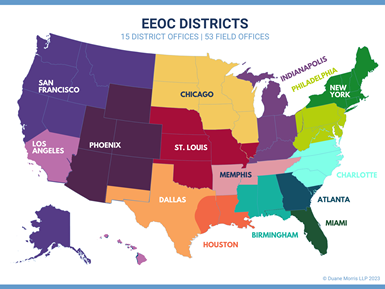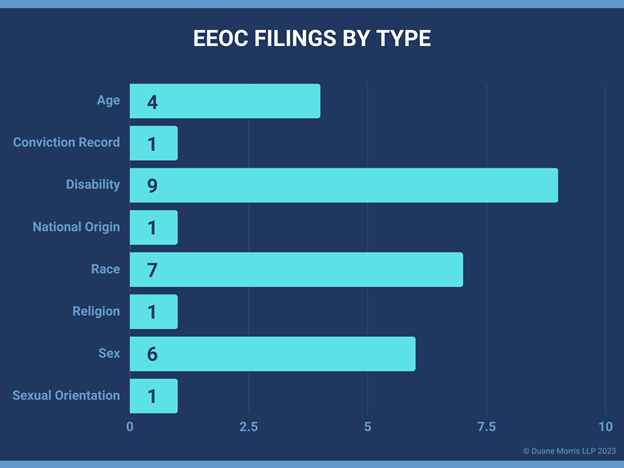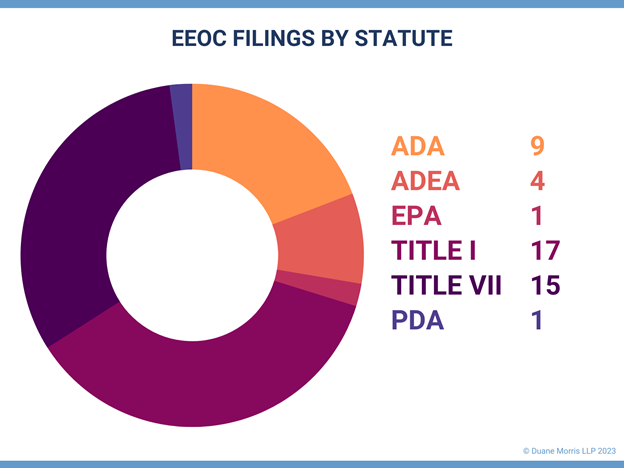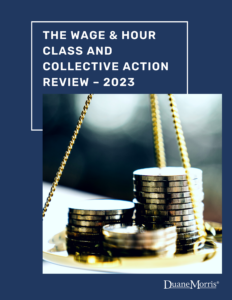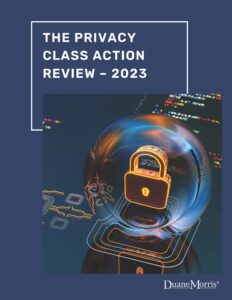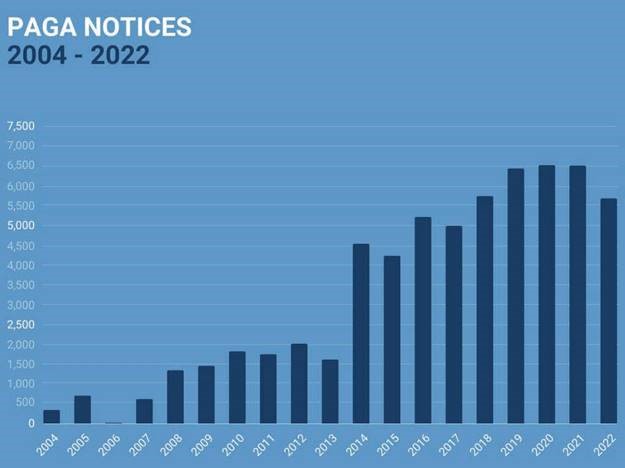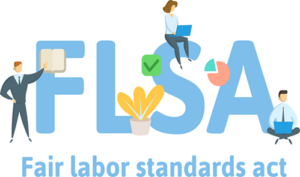 By Gerald L. Maatman, Jr., Jennifer A. Riley, and Rebecca S. Bjork
By Gerald L. Maatman, Jr., Jennifer A. Riley, and Rebecca S. Bjork
Duane Morris Takeaways: On April 14, 2023, U.S. District Court Judge T. S. Ellis, III joined in the fray over whether the long-used two-step process for issuing notice of a Fair Labor Standards Act (“FLSA”) collective action is consistent with the text of the statute. In Mathews v. USA Today Sports Media Group, LLC, et al., No. 1:22-CV-1307 (E.D. Va.), he held that it is not. Judge Ellis ordered the parties to engage in limited discovery to establish a factual record upon which he can decide whether members of the plaintiff’s proposed collective action are, in fact, “similarly situated.” If – and only if – he concludes they are, he would then issue a notice allowing such persons to opt-in to the collective action. This ruling is significant because it follows a similar decision by the U.S. Court of Appeals for the Fifth Circuit in 2021, and the Sixth Circuit is currently considering an appeal raising the same issue. Thus, momentum may be building for the U.S. Supreme Court to ultimately step in and settle the issue. The one-step or two-step process is far from academic, for it has everything to do with litigation costs and risks, and the leverage flowing from a win or a loss in the certification battle.
Case Background
Plaintiff filed a collective action lawsuit under the FLSA alleging that USA Today Sports Media Group, LLC (“USA Today”) and Gannett Co., Inc. unlawfully classified her and others like her as independent contractors, and thus denied them overtime pay. From January 2017 to August 2021, Plaintiff was the Site Editor for the Seahawks Wire website, USA Today’s website covering the NFL franchise Seattle Seahawks. In her role, Plaintiff alleges that she and other “similarly situated” Site Editors for other teams all signed the same “Editor Agreement” with USA Today, and that they all engaged in similar duties such as “writing, editing and publishing sports news articles regarding their respective teams; managing others; editing other people’s articles; and making social media posts regarding articles they had written.” (Slip Op. at 2.) She submitted three declarations signed by herself and two others working as site editors for other teams, along with a motion for “conditional certification” of her FLSA collective. (Id.)
USA Today responded by submitting declaration evidence to show that Site Editors have freedom to create their content including how long their articles are, the tone they take, how many are posted each day, et cetera. (Id. at 3.) It also noted that it did not provide any office space, tools, feedback, performance evaluations, or supervisors to Site Editors, and also allowed them to write for other websites. (Id.) In other words, USA Today submitted evidence to show that under the applicable test for deciding whether someone is an independent contractor, Site Editors meet that standard, so they are not misclassified.
As is typical, Plaintiff argued that her lawsuit should proceed immediately as a collective action by issuance of an order sending notice to all of the other Site Editors around the nation. She maintained that she had submitted sufficient evidence under a lenient first step standard in a two-step process that they are all “similarly situated.” (Id. at 1, 4.) Under a test established in 1987 by Lusardi v. Xerox Corp., 118 F.R.D. 351 (D.N.J. 1987), Plaintiff contended that step one is an “initial ‘notice stage’ determination” that members of the proposed collective action are similar enough to receive a notice of the action and be given the opportunity to opt in. (Id. at 4 (citing Thiessen v. Gen. Elec. Capital Corp., 267 F.3d 1095 1102 (10th Cir. 2001).) Under this view of the FLSA, a plaintiff need only show “substantial allegations” that they are “victims of a single decision, policy or plan” in order for a notice to be sent – in this case, to all Site Editors nationwide. (Slip Op. at 4.) Plaintiffs then usually receive the right to conduct complete discovery, after which defendants may file a motion to “decertify” the collective action, based on evidence developed during the discovery process.
USA Today responded that the Court should follow the Fifth Circuit’s recent decision in Swales v. KLLM Transp. Servs., LLC, 985 F.4th 430 (5th Cir. 2021), which rejected the longstanding approach developed in Lusardi. (Slip Op. at 4.) It argued that the two-step approach has no basis in the statutory language of the FLSA. Rather, it emphasized that the court must instead make a sound factual determination as to whether proposed opt-in plaintiffs are, in fact, similarly situated and that requires discovery targeted solely to that inquiry. (Id.)
The Court’s Decision
Judge Ellis agreed with USA Today. He ruled that the parties must engage in discovery directed to establishing whether or not Site Editors around the country are similarly situated with regards to their work, the supervision provided (or not) by USA Today, along with the other relevant factors to establish that they were misclassified as independent contractors. He began by noting that the Fourth Circuit had not adopted the Lusardi test, nor had it commented on the Fifth Circuit’s decision in Swales. Rather, the Fourth Circuit has simply stated that district courts have discretion to manage the notice process in FLSA collective actions. (Id. at 5.) Judge Ellis decided that “the correct approach then, as noted by the Fifth Circuit, is the one authorized by FLSA’s text. Courts must determine, at the outset, whether a proposed collective action is ‘similarly situated’ to the named plaintiffs. To make this determination, courts may require limited discovery, targeted only at the factual and legal considerations needed to make the ‘similarly situated’ determination.” (Id. at 6.) He then ordered discovery only of the following – from the plaintiffs the Schedule C or W-2 forms of the named plaintiff and two declarants relating to their work writing sports media blog posts; any employment contracts, offer letters or agreements relating to their work; and one three-hour deposition; and from the defendants the independent contractor agreements; policy documents relating to the independent contractor arrangement; an organizational chart; a three-hour long Rule 30(b)(6) deposition; and a three-hour long deposition of defendants’ declarant filed in opposition to plaintiff’s motion. (Id. at 6-7). The discovery must be completed by May 26, 2023. (Id. at 6.)
Implications For Employers
Our annual class action review analyzed FLSA conditional certification rates, and plaintiffs won 82% of first stage conditional certification motions, but only 50% of second stage motions. Our previous post on these statistics is here. Hence, the stakes are quite meaningful in terms of the approach outlined in the Matthews ruling.
As any employer who has been sued by a named plaintiff seeking to represent an FLSA collective action knows, the discovery burden imposed by application of the two-step Lusardi decision is far more onerous than what Judge Ellis established in this case. Full merits discovery lasting more than a year is common, as opposed to a narrowly-targeted investigation of the work performed by the plaintiffs along with facts relating to the relevant independent contractor factors. For that reason alone, employers with operations within the Fourth Circuit will be happy to know they can cite Judge Ellis’ ruling in the future. While no one can predict the future with any degree of certainty, it seems likely that this new legal trend regarding the collective action notice process may eventually need to be resolved by the U.S. Supreme Court.

